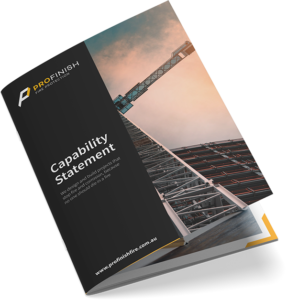Fire protection is a paramount consideration in the construction of any building, be it commercial, industrial, or residential. Ensuring that a structure can withstand the destructive effects of fire is not only a legal requirement but also a moral obligation to protect the occupants and valuable assets. When it comes to fire protection, one key aspect that usually arises is how to safeguard steel structures. Steel is a common building material due to its strength and durability, but it’s vulnerable to high temperatures. In the event of a fire, it can weaken and potentially compromise the integrity of the entire building. This is where steel fire protection comes into play.
There are various methods for safeguarding steel structures against fire, and choosing the right one depends on your project’s specific needs, budget, and regulations. In this article, we’ll explore the different types of steel fire protection and help you understand which one might be the best fit for your project.
Intumescent Coatings
Intumescent coatings are a popular choice for steel fire protection. These coatings are designed to expand when exposed to high temperatures. When a fire occurs, the intumescent coating swells and forms an insulating char layer. This layer acts as a barrier, slowing down the transfer of heat to the steel structure. Intumescent coatings can be applied to both structural steel members and steel columns, beams, and other elements.
Pros:
- Intumescent coatings are aesthetically pleasing and can be applied in various finishes, including paint-like options, making them visually appealing.
- These coatings are thinner than some other fire protection methods, which is ideal when space is limited.
Cons:
- Proper application often requires professional expertise to ensure uniform coverage.
- Over time, these coatings may require maintenance or reapplication to remain effective.
- Intumescent coatings are the most expensive solution.
- These coatings require a class SA 2.5 sandblast which may not be within a lot of companies’ capability.
- Steel cannot be fixed to once an intumescent coating has been applied.
Vermiculite Spray
Vermiculite spray is a traditional approach to steel fire protection. It involves using a specialised spray gun to apply a fire-resistant material directly onto steel structures. This method is often used for industrial and commercial buildings with complex or hard-to-reach structural components. Vermiculite spray is often used where aesthetics are not a primary concern.
Pros:
- Vermiculite spray is the cheapest method of fire protection.
- It provides long-lasting protection and doesn’t require frequent maintenance.
- Spray-applied fireproofing can be customised to cover intricate or irregularly shaped structures.
- It’s a rapid method, which can help expedite construction schedules.
Cons:
- Vermiculite spray is thicker, so it might require more space and affect the aesthetics.
- Vermiculite cannot be fixed to.
- This method is not architecturally pleasing.
- The added weight can be a concern in some construction applications.
- The application process may generate overspray, requiring care and containment.
Fireproofing Boards
Fireproofing boards are prefabricated panels or boards that can be installed around steel members. These boards are composed of non-combustible materials, often incorporating mineral wool or other fire-resistant components. Fireproofing boards provide both thermal and structural protection to steel elements.
Pros:
- These boards are relatively easy to install, making them suitable for retrofitting or enhancing existing structures.
- Once installed, they typically require little to no maintenance.
Cons:
- They may not be as visually appealing as intumescent coatings, especially in exposed ceiling areas.
Choosing the Right Fire Protection Method
Selecting the appropriate steel fire protection method for your project involves considering various factors, including:
- Ensure that your chosen method aligns with the Australian Building Code and fire safety regulations.
- Consider whether the visual appearance of the protection method matters for your project.
- Assess the available space for fire protection and how each method might impact it.
- Evaluate your budget constraints and determine the most cost-effective solution.
- Factor in ongoing maintenance and reapplication requirements.
Steel fire protection is a crucial element of any building’s safety. When choosing the right method, carefully weigh the pros and cons of each option and consider your project’s specific needs. Consulting with fire protection professionals or engineers can provide valuable insights to ensure your choice aligns with safety standards and regulations. By making an informed decision, you’ll help safeguard your building and its occupants against the devastating impact of fire.

